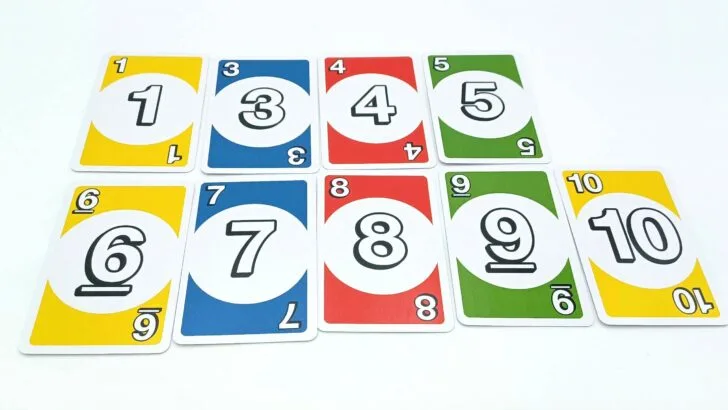When we delve into the world of measurements, understanding the basic units of length is crucial. Standard units such as yards, miles, meters, and feet form the foundation of our measurement system. Each team has its unique place, whether in sports, travel, or construction.
Comparison With Other Systems
In comparing systems, the Imperial system (or U.S. customary units) uses yards and miles, while the Metric system relies on meters and kilometers. Navigating between these systems often requires conversions. For example, the query “How many yards in a mile?” is common. One mile equals 1,760 yards, which is vital in fields where precise measurement matters.
This section establishes a basic understanding, paving the way for more detailed discussions on units like yards and miles.
Decoding The Conversion: Yards To Miles
Exact Conversion: The question “How many yards in a mile?” is a fundamental one in understanding length conversions. To answer simply, one mile is equivalent to 1,760 yards. This conversion factor is critical in many practical applications.
Mathematical Explanation: To convert miles to yards, multiply the miles by 1,760. For instance, to find out how many yards are in 5 miles, multiply 5 by 1,760, which equals 8,800 yards. It’s a straightforward multiplication that anyone can do.
Visual Representations: Understanding this conversion can be more accessible with visual aids. Imagine a football field, which is a bit shorter than a yard, lined up end to end 1,760 times. This image gives a tangible sense of just how long a mile is.
Knowing “how many yards in a mile” is more than just a fact; it’s a practical tool. Whether you’re planning a running track or estimating travel distances, this knowledge is invaluable. The simplicity of the conversion makes it accessible to everyone, from students to professionals.
Practical Applications And Examples
Everyday Use Cases: Understanding how many yards are in a mile is practical in everyday life. For instance, athletes and coaches often use this knowledge in track and field. Knowing the exact mile length helps in planning training routines and race strategies.
Problem-Solving: Consider a scenario where a runner wants to know the distance of a 5-mile race in yards. By multiplying 5 miles by 1,760 (the number of yards in a mile), they quickly find that the race is 8,800 yards long. This conversion is essential for accurate planning and goal setting.
Conversion Tools and Tips: While manual calculation is straightforward, there are tools like conversion apps and websites for quick answers. They are convenient when dealing with complex or large numbers. For those preferring mental math, remembering key conversion factors, like 1,760 yards in a mile, is useful.
These tools and tips make dealing with distances in yards and miles easier and more accurate, crucial in various fields, including sports, construction, and travel.
Beyond Yards And Miles: Understanding And Using Different Length Units
Global Perspective: Around the world, units of length vary widely. While in the United States, the question is standard, other countries may use kilometers instead of miles. It’s important to recognize these differences in global communication and travel.
The Metric System: In countries using the Metric system, we often measure distances in meters and kilometers. A kilometer is shorter than a mile, emphasizing the need to understand both systems for accurate conversion. Switching between systems is a valuable skill in today’s interconnected world.
The Importance of Accuracy: In fields like science, engineering, and navigation, precision is crucial. Whether you’re measuring how many yards in a mile or converting kilometers to miles, accuracy is key. Mistakes in conversions can lead to significant errors in planning and executing various projects.
Understanding different length units helps us in many ways, from basic calculations to practical tasks. This knowledge is more than factual; it’s a foundation for practical application in a diverse world.
Why College Athletes Should Not Be Paid Because of Scholarships
Conclusion
In exploring the simple question of “How many yards in a mile?” we’ve journeyed through the basics of length measurements, decoded specific conversions, seen their practical applications, and understood the importance of various length units globally.
This exploration emphasizes not just the utility of knowing key conversions but also the broader significance of understanding different measurement systems for effective communication and accuracy in various fields.
Whether it’s for sports, travel, or scientific precision, the ability to navigate between yards, miles, and other units is an essential skill in our interconnected world. We encourage readers to further their knowledge and appreciation of these measurements, as they are more than mere numbers—they connect us to the world in measurable and meaningful ways.
Frequently Asked Questions
There are 1,760 yards in a mile.
This knowledge is crucial for athletics, land measurement, and navigation.
Yes, by multiplying or dividing by 1,760, you can convert between miles and yards.
Yards and miles are primarily used in the United States; most other countries use the Metric system.
A mile is longer than a kilometer. One mile is approximately 1.609 kilometers.
Yes, there are many online calculators and apps designed for quick and accurate conversions.
References
- www.toppr.com
- How to Convert Miles to Meters – www.quora.com
Read Also
- How Old is Jennifer Lopez: A Look at Her Life and Career
- How to Sell Feet Pics: A Guide to Earning Money Online
- How Many Cups in a Liter: Making Sense of Volume Conversions
- How to Remove a Menstrual Cup (in 5 Easy Ways)
- How to Write 2 Weeks Notice Letter of Resignation for a Nurse? Tips and Templates.






